Gluten-free Maki Sushi Rolls are a Great Meal or Appetizer!
Share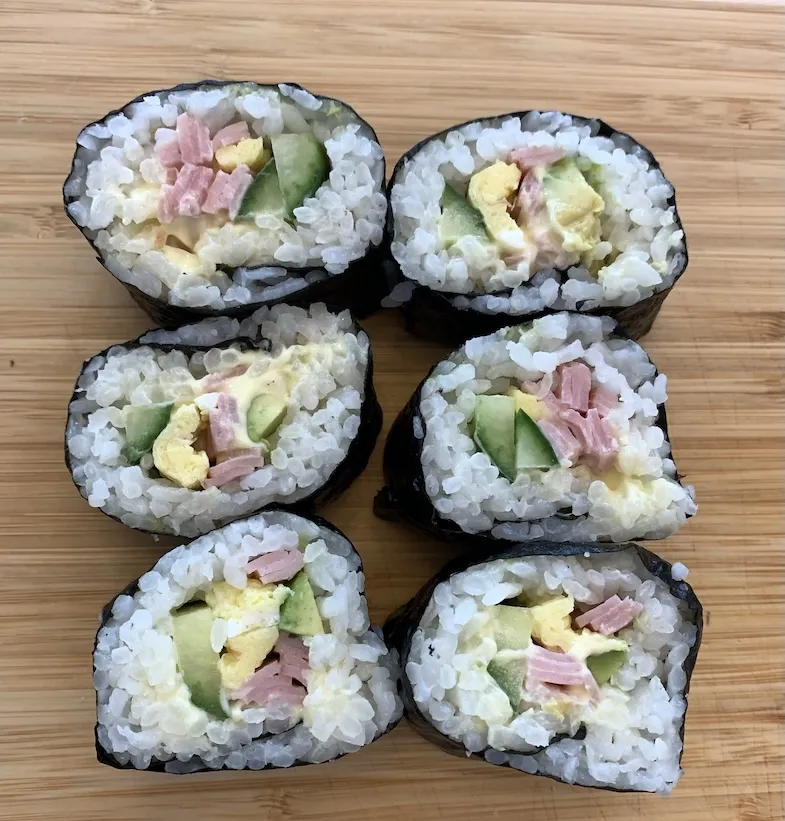
Maki sushi or Nori maki or Futomaki is my favourite type of sushi. It is great as an appetizer at a party. Makes a wonderful lunch or picnic addition.You can adjust the fillings to suit your tastes.
- Steps for Making Maki Sushi Rolls
- What is Maki Sushi
- Filling Suggestions for Maki Sushi Rolls
- What to serve with maki sushi.
Steps for Making Maki Sushi Rolls (Nori maki)
- Make rice.
- Make vinegar mixture.
- Mix rice and vinegar mixture gently.
- Make fillings.
- Gather everything together.
- Get bamboo mat or towel with plastic wrap.
- Put on nori sheet.
- Put wasabi
- Put on room temperature rice, leave an area to seal.
- Add mayonnaise.
- Add your fillings.
- Roll and seal with a little water.
- Cut and serve.
The first thing you need to do is make rice. Best to use sushi rice.
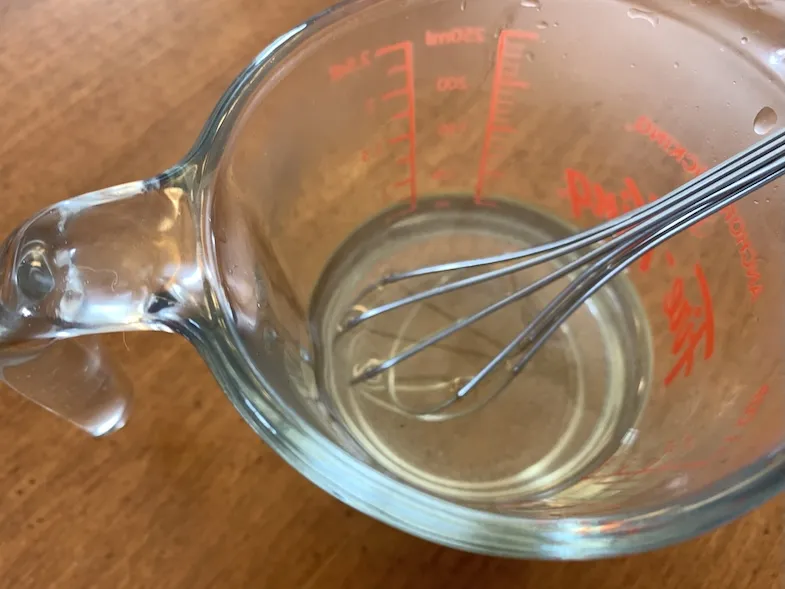
Mix the rice vinegar, sugar and salt mixture. I sometimes microwave it for a few seconds to help dissolve the sugar.
After the rice is cooked, put it in a large bowl or a 9 inch x 13 inch pan. Pour the vinegar seasoning mixture over the rice and gently mix. Here is a link to my recipe for making Sushi Rice.
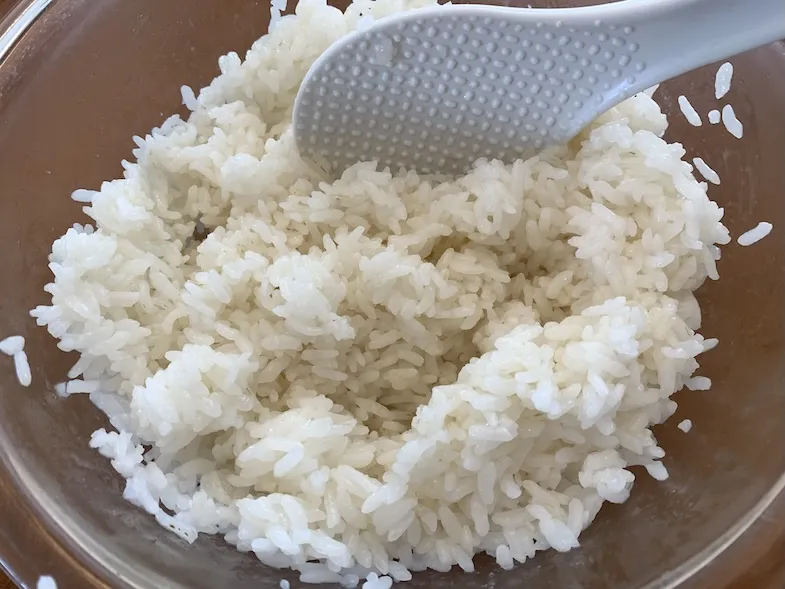
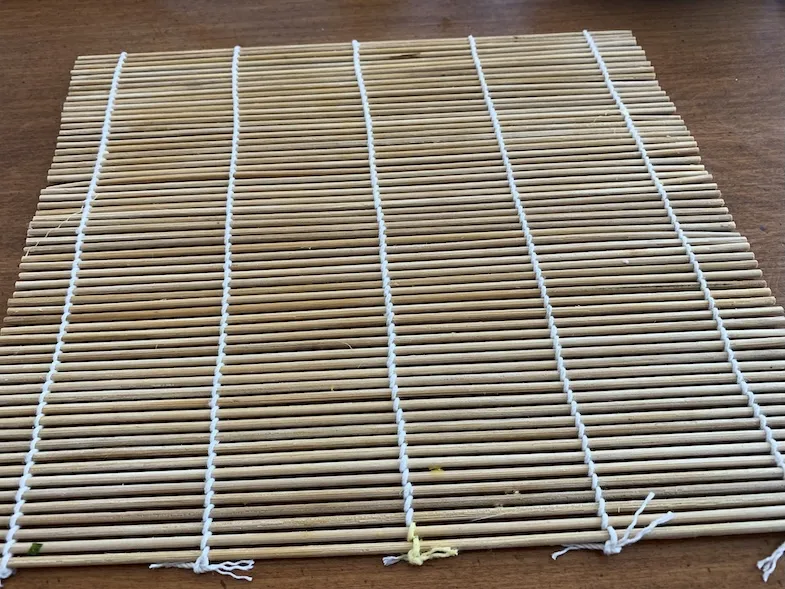
I use the above bamboo mat (called 'makisu' in Japanese) for rolling the maki sushi. If you don't have one you can use a folded tea towel with saran wrap (plastic wrap) on it.
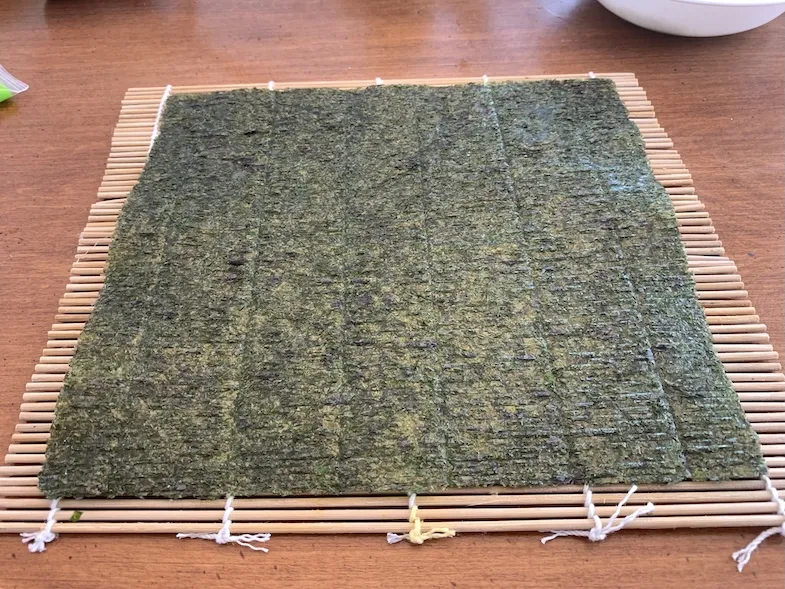
Put the nori sheet on the mat. Have is rough side up. When you buy the nori sheets, always read the ingredients. Sometimes they are flavoured with soya sauce that contains wheat, so always read the ingredients list and look for the ones that have no seasonings.
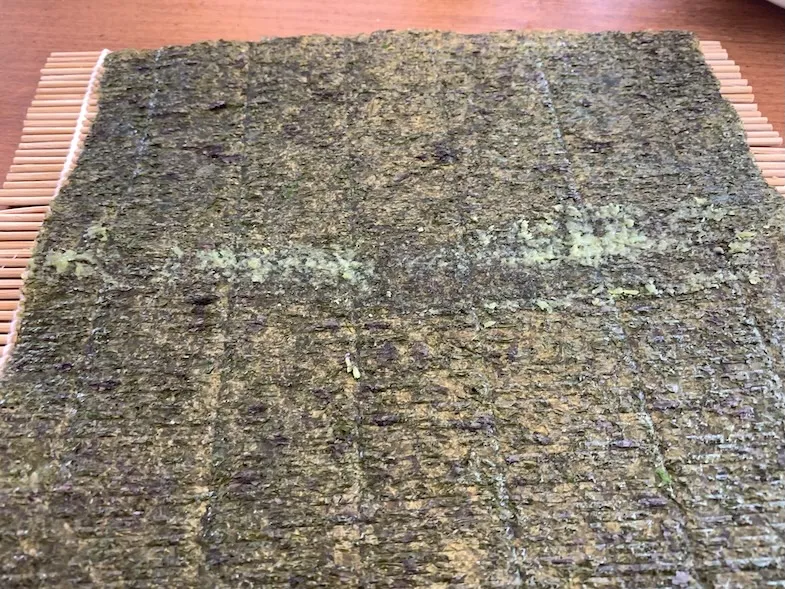
I like to use a small teaspoon and spread a thin strip of wasabi paste on the nori sheet. This is optional. Again read the ingredients list on your wasabi. Some do have wheat.
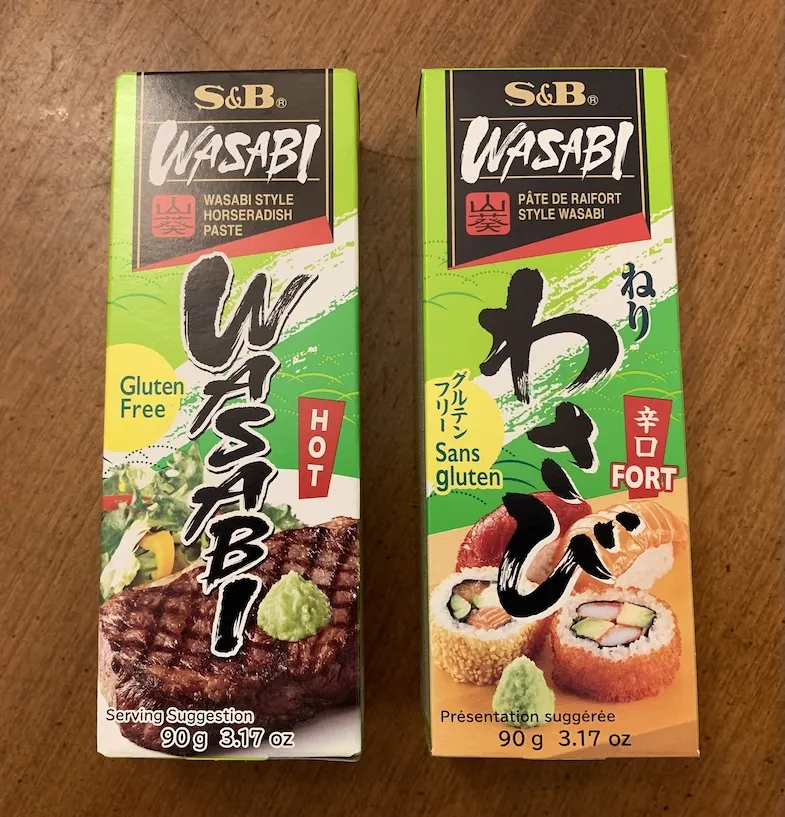
I like to use S & B's wasabi paste. It is gluten-free and comes in handy little tubes, which make it easy to use. Here is the English and French side of the boxes the tubes of wasabi come in. On the French side you can see the Japanese Katakana for "gluten-free".
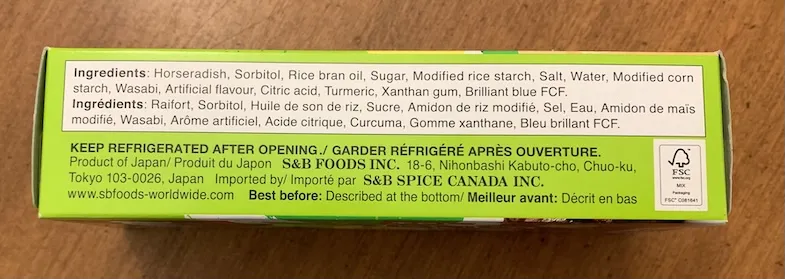
For those who are interested, here is the ingredients list on the packages. In Canada, any food producted labelled "gluten-free" is safe for celiacs. It is a legal term. Also, Canadian food labelling laws state that gluten must be clearly listed on ingredients lists using plain English. Gluten (barley, rye, gluten oats, and wheat) can't be hidden. They must be on the ingredients list if in the product.

The most important step! Put the sushi rice on the nori sheet. Put a large scoop on and wet your hands with water and gently spread the rice on the nori sheet. Leave about 1/2 inch at the top. You will use this to seal the roll later.
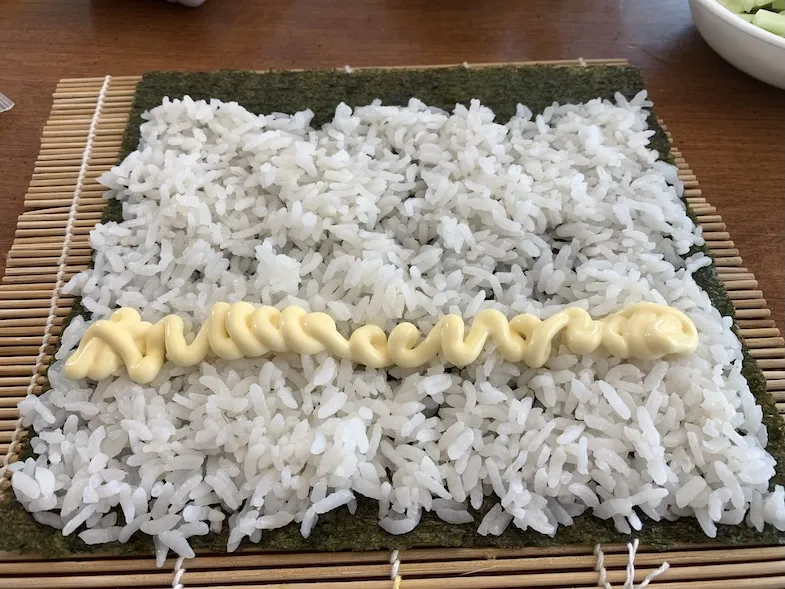
Put a line of Japanese gluten-free mayonnaise on the rice. Do read the ingredients on the Japanese mayonnaise.
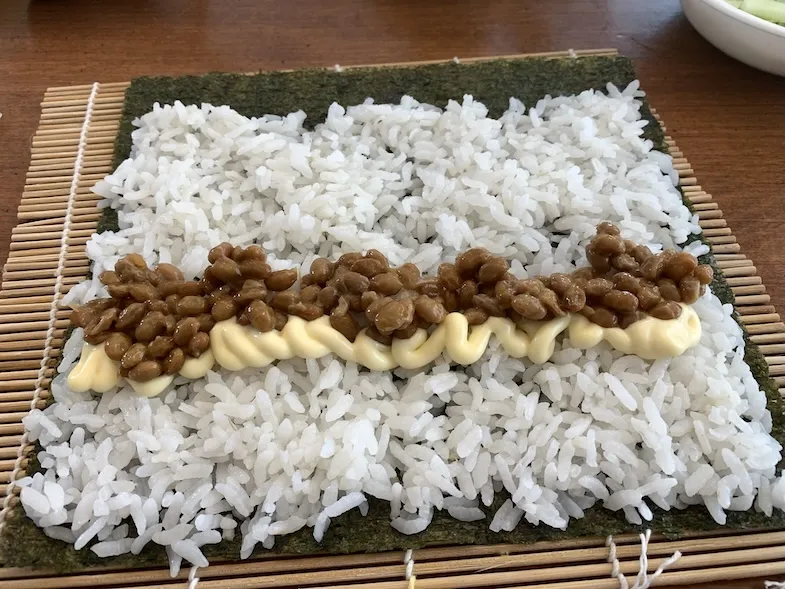
I'm putting natto in this maki sushi roll. Natto are fermented soya beans. I buy the one where the fermented beans have no seasonings mixed in them. The soya sauce packet that comes with the nutto package is usually not gluten-free. Do read the ingredients list.
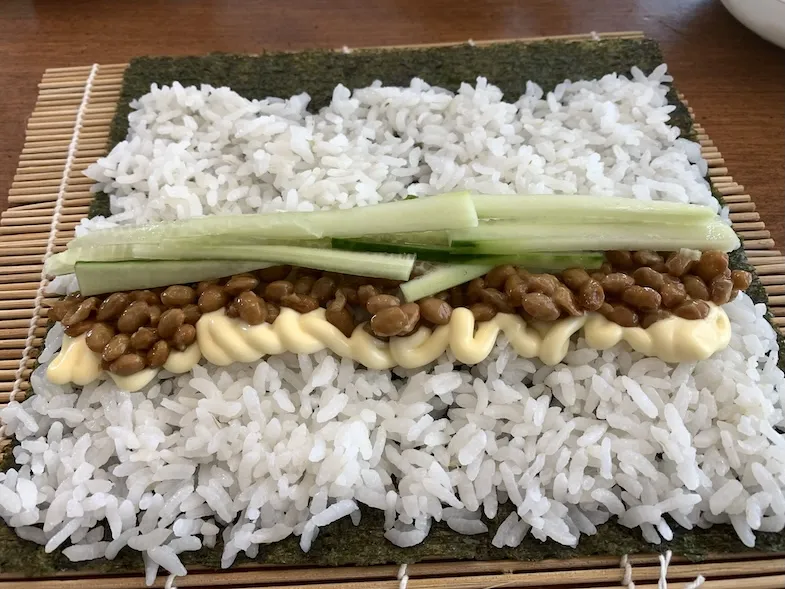
English cucumbers work best in sushi maki rolls. Slice them thinly and put on the sushi rice.
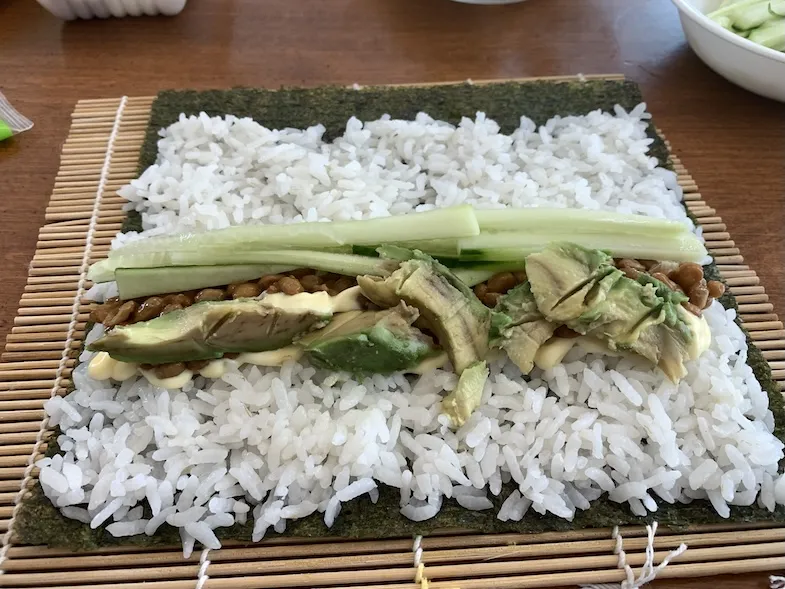
Avocado slices taste great in maki sushi rolls. I love the creamy flavour. If you can't find ripe avocados you can use packaged guacamole. Just use the non-seasoned one.
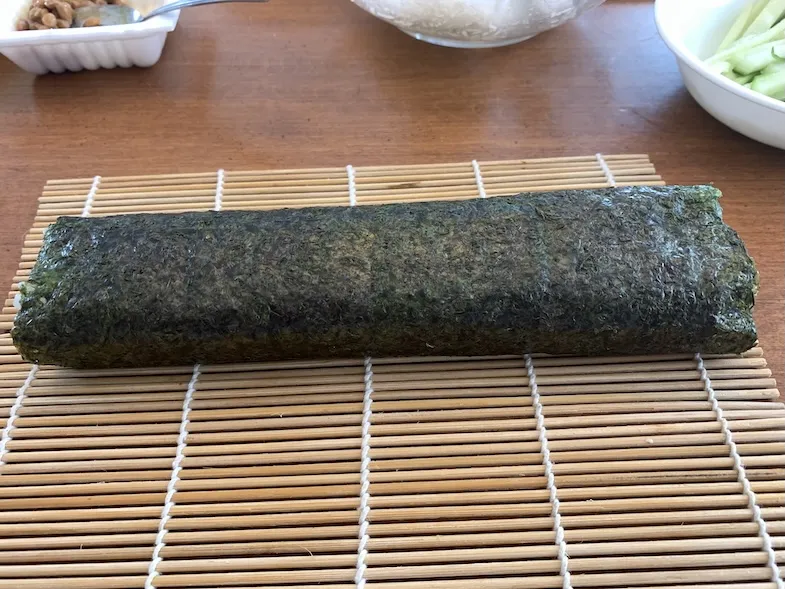
When you've added all the ingredients you want then roll up the maki sushi roll. Start rolling and use your fingers to keep the fillings in place and then use the mat to roll the nori. Wet your finger with some water and run it along the 1/2 inch of nori at the top and roll tight. This will keep the sushi roll together. Now you are ready to slice and eat.

You can also make smaller sushi rolls. These rolls usually have just one ingredient for the filling.
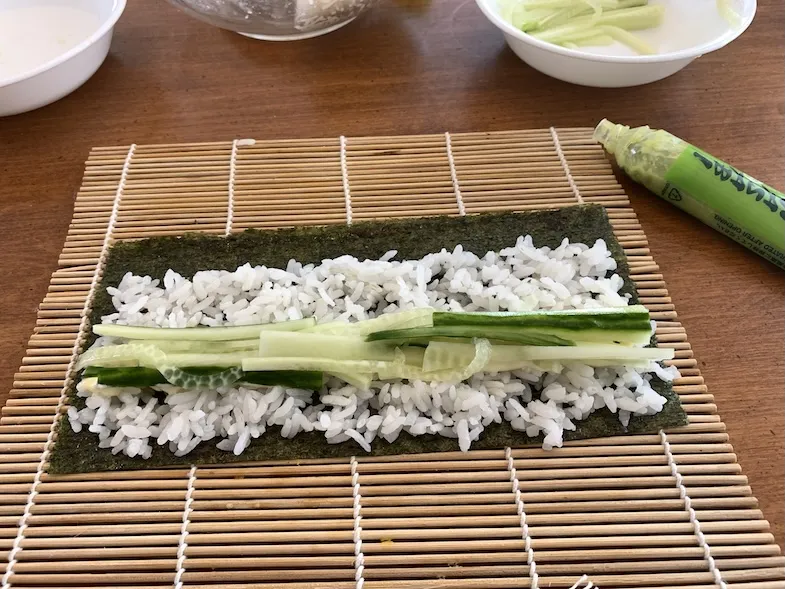
Kappa-maki or kyuri-roll (kyuri = Japanese word for 'cucumber') is a thin nori maki made with cucumber strips. Thin strips of pickled daikon radish called "Takuan" are also a popular filling. You can add what you like, but it should always be just a single ingredient.
Takuan can be gluten-free. You usually can find them at Asian food stores. It is essential however to check the ingredients list to make sure there are no gluten ingredients used in the preparation of the Takuan. Japanese pickles are delicious and nutritious addition to a gluten-free diet. If you can't find any gluten-free Takuan, here the Gluten-Free Takuan Recipe I use. Japanese pickles have a strong smell. I love it, but some people are not used to it.
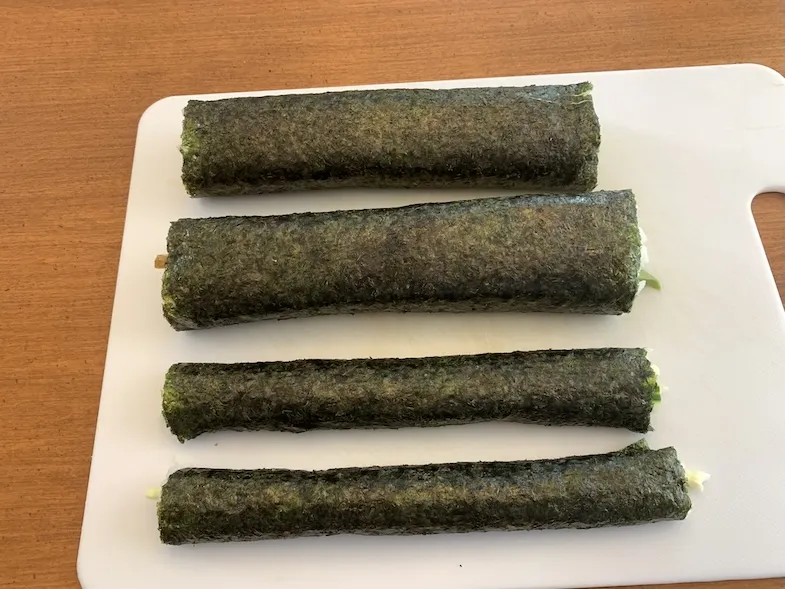
Here are the large and small maki sushi rolls ready to cut. You could wrap them in saran wrap now and store in the fridge. When you are ready to serve, just take them out and slice and plate. Let them come to room temperature to eat.
The best way to slice maki sushi is to have a damp cloth to wipe your knife with between cuts. In order to make a clean slice, cut straight down into the roll and pull the knife towards you. Don't cut back and forth as that will squish the roll.
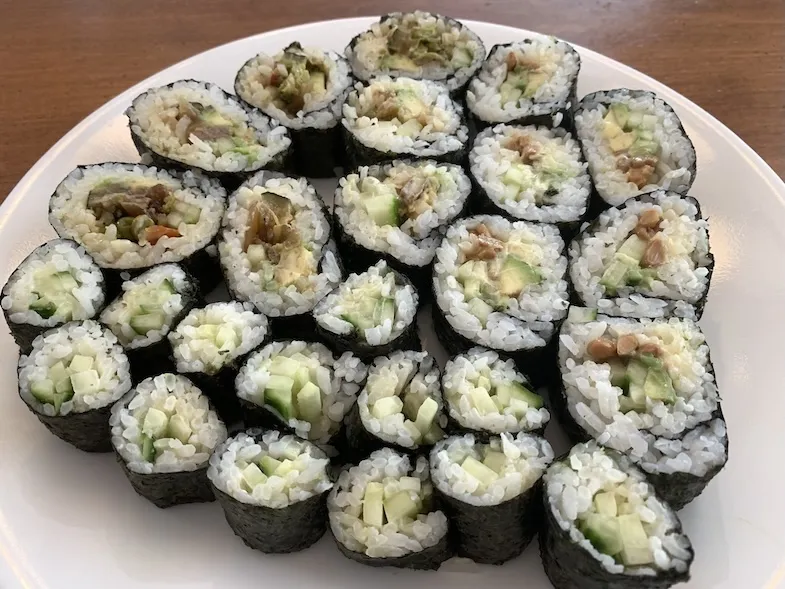
Here the maki sushi rolls are, cut up and ready to eat. I serve them with small plates for guests to add gluten-free soya sauce and wasabi for dipping.
What is Maki Sushi
Maki means "roll". Maki Sushi or makizushi is a cylindrical roll of vinegared rice with a variety of fillings wrapped in a sheet of nori seaweed.
Maki sushi is also called 'Nori maki' when rolled in nori a seaweed sheet. Nori maki comes in large or small rolls. The large ones have a variety of ingredients while the small ones have only one ingredient.
Large nori maki are called futomaki (futo = large) and small nori maki rolls are called hosomaki (hoso = thin).
I often make maki sushi rolls using leftovers. Strips of cooked roast beef or pork go well in rolled sushi with horseradish and lettuce.
Filling Suggestions for Maki Sushi Rolls
- shredded egg
- avocado
- cucumber strips
- ham strips
- tuna mixed with mayonnaise
- shredded carrots
- salmon
- cream cheese
- pickled daikon (takuan)
- cooked shrimp
- canned salmon
- smoked salmon
- sashimi grade fish
- gluten-free imitation crab sticks
- cooked crab
- fish roe
- gluten-free tempura sweet potato
- lettuce or perilla (shiso) leaves
- slice shiitake mushrooms (cooked in a gluten-free soy sauce, sugar and mirin mixture)
- seasoned kampyo (cooked gourd strips)
- variety of vegetables such as seasoned egg plant, grilled zucchini, sliced green or red pepper and so on.
To make seasoned kampyo (aka kanpyo): soak the dried kampyo strips in a bowl of water for about an hour. Then drain and rinse. Put in a pot and cover with water, add equal amounts of sugar and gluten-free soya sauce. Bring to a boil, then lower the heat and cook until the liquid is almost cooked away. Remove from heat and let cool. For about 20 strips of kampyo use 3 tablespoons each of sugar and gluten-free soya sauce.
For the seasoned shiitake mushrooms. I use dried shiitake mushrooms. Put 6 dried shiitake mushrooms in a bowl and soak in hot water for about an hour. Then slice thinly and put in a small pot along with 2 tablespoons of gluten-free soya sauce, 1 tablespoon of sugar and 1 tablespoon of mirin and enough water to cover the mushrooms. Bring to a boil, then lower the heat and cook until the liquid is almost gone. Remove from heat and cool.
What to serve with maki sushi.
I usually serve Japanese pickles such as takuan, miso soup, karrage (fried) chicken and pickled ginger with maki sushi.
Maki sushi also goes well with Agedashi dofu (Deep fried tofu served in a slightly sweet soy sauce broth and grated daikon), and cooked spinach salad with a sesame dressing.
We always have some form of maki sushi roll as part of our New Year's Day meal. They are a great appetizer for a holiday party.

When I lived in Japan, my local grocery store had a bunch of food stalls on the main floor. One of these made a variety of maki sushi rolls. My favourite was 'Salada Maki". It was a roll made with sliced ham, cucumber, egg, avocado and mayonnaise. I would buy one for lunch at least once a week. The ladies who made them were very kind and were very patient as I practiced my Japanese.
Above are ingredients I use to make 'Salada Maki' at home. You can see the prepared sushi rice and I'm getting ready to start assembling the roll.
Gluten-Free MakiSushi (aka Futomaki or Rolled Sushi)
Ingredients
- 3 cups cooked sushi rice
- 3 - 4 tablespoons sugar
- 1/3 cup rice vinegar
- 1 teaspoon salt
- 6 sheets of nori
- gluten-free wasabi
- gluten-free Japanese mayonnaise
- fillings: egg, avocado, cucumber, ham, nutto
- To make the sliced eggs: 4 eggs, 1-2 teaspoons of sugar, 1 tablespoon of mirin. Mix and pour a small amount into an oiled frying pan as if you were making thin crepes. Cook all the egg mixture and put on a plate, then cut into thin slices.
Directions
- Cook rice.
- Prepare sushi vinegar mixture and mix into warm rice.
- Make egg strips.
- Prepare fillings: slice cooked egg, ham, cucumber, avocado into thin strips.
- Start to put together sushi roll.
- On a sheet of nori, add wasabi, then rice, then mayonnaise then your desired fillings. Roll. Seal edge with a little water and set aside.
- When all rolls are done you can store uncut covered in plastic wrap or cut into slices and put on a plate.
- Serve with gluten-free soya sauce and gluten-free wasabi for dipping. A side of pickled radishes is tasty.
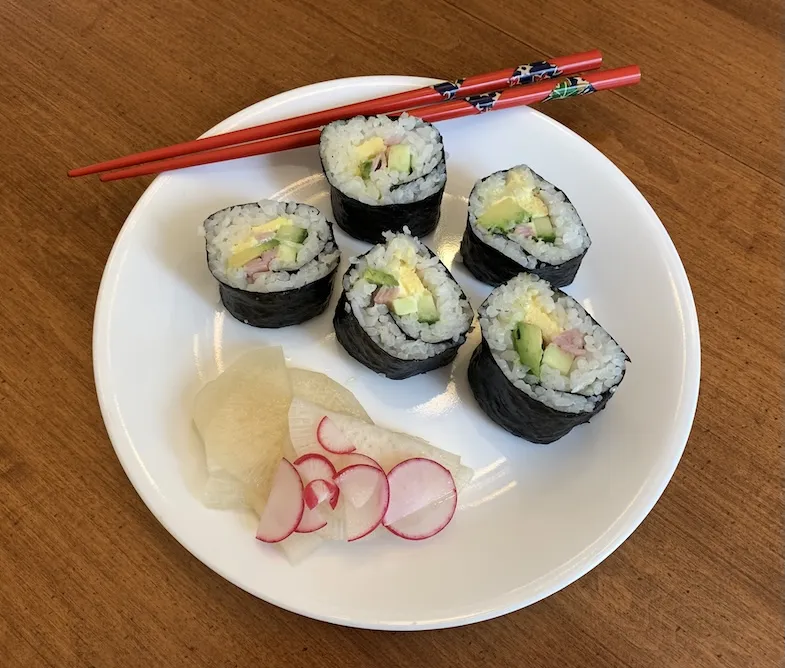
Oh ,I really need to make these again soon. The photo of the Salada Maki Sushi Rolls cut up is making me hungry! I do hope you give it a try.
Have you made maki sushi rolls? What are your favourite fillings?
Note: These are my personal experiences and opinions. Always seek out a medical opinion for medical concerns. Not sponsored. If sponsored I will always say so at the top of the post.